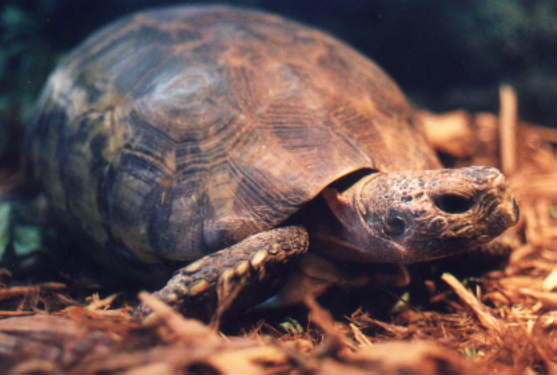In the mid-90's, not much was really known about hingebacks. They live in Africa, and most of the animals that came to the United States originated in the countries of west Africa.
There were two types commonly available then- the forest hingeback (mostly Kinixys homeana, but sometimes Kinixys erosa were lumped in as well) and Bell's hingebacks, which were at the time Kinixys belliana nogueyi. Other species were also imported, but those were much less common and. Back then, you either had a "Forest Hingeback" or a Bell's Hingeback"
I had two Homeana during this time period, both of which didn't last very long at all. I had no idea what I was doing, and since they were the cheapest tortoises available, they were then and are still now purchased by novice, young keepers who have no idea how difficult it is to get them acclimated to captivity, and few lived longer than a year.
Finally, in 1999, I found a Bell's hingeback (what we know know as Kinixys nogueyi) at a local pet shop in Kent Ohio. This animal had been in captivity some time, so I was told by the owner, and I purchased her. She was with me for 20 years!
 |
| Kinixys nogueyi- the Western Hingeback Tortoise- Circa 2001 |
In 2000, I purchased a pair of Kinixys nogueyi, right before their importation was banned into the U.S. because they carried a tick which was known to carry heartwater disease, a pathogen that could devastate the U.S. cattle industry.
I still have one of those females, and will have had her for 20 years come February, 2020.
Today, I keep two pairs of Kinixys nogueyi, three Kinixys homeana males, and four Kinixys homeana females.
My goal? Help maintain these two species in captivity (and possibly more), and learn as much as I can about them so I can provide you the absolutely best guidance on how to care for your hingebacks.
-Tom


No comments:
Post a Comment